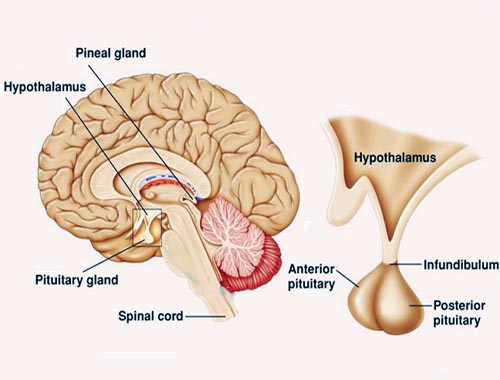Brain Tumor, Nonfunctional pituitary adenoma
Almost half of all pituitary tumors are what is called non-functioning tumors. This means that they do not produce any hormones themselves. But the presence and position of the tumor can cause headaches, vision problems or put pressure on the pituitary gland, causing it to stop producing the needed amount of one or more hormones. This leads to hypopituitarism. The specific symptoms of a non-functioning tumor will depending on its location and its impact on surrounding tissues such as the pituitary gland, the optic nerves or the hypothalamus. Some of the symptoms that might occur include: Balding; Constipation; Diabetes insipidus; Disturbed vision; Dry skin; Fatigue; Headaches; Impotence for men; Loss of (or irregular) monthly periods for women; Loss of sex drive; Low blood pressure and dizziness on standing (postural hypotension); Low energy; Muscle weakness; Pale skin; Reduced fertility; Sensitivity to cold; Weight gain; Each of the symptoms described above occur in response to the loss of one or more of the hormones produced by the pituitary. Decrease in the production of only one hormone would not lead to all the symptoms described above. The first step in the diagnostic process is to confirm that hypopituarism is present. Once that is confirmed, the next step is to identify and locate the non-functioning tumor. Symptoms of hypopituitarism tend to be general and can resemble other conditions, including anorexia nervosa, chronic liver disease and hemachromatosis. An accurate diagnosis is essential before treatment is started. If hypopituitarism is suspected, a doctor may order: Magnetic resonance imaging scans; Blood tests to measure the amount of different hormones in the blood. In particular, tests should be done for thyroid-stimulating hormone (TSH) and ACTH. A lack of these hormones can be life-threatening. Prolactin levels may also be measured.
